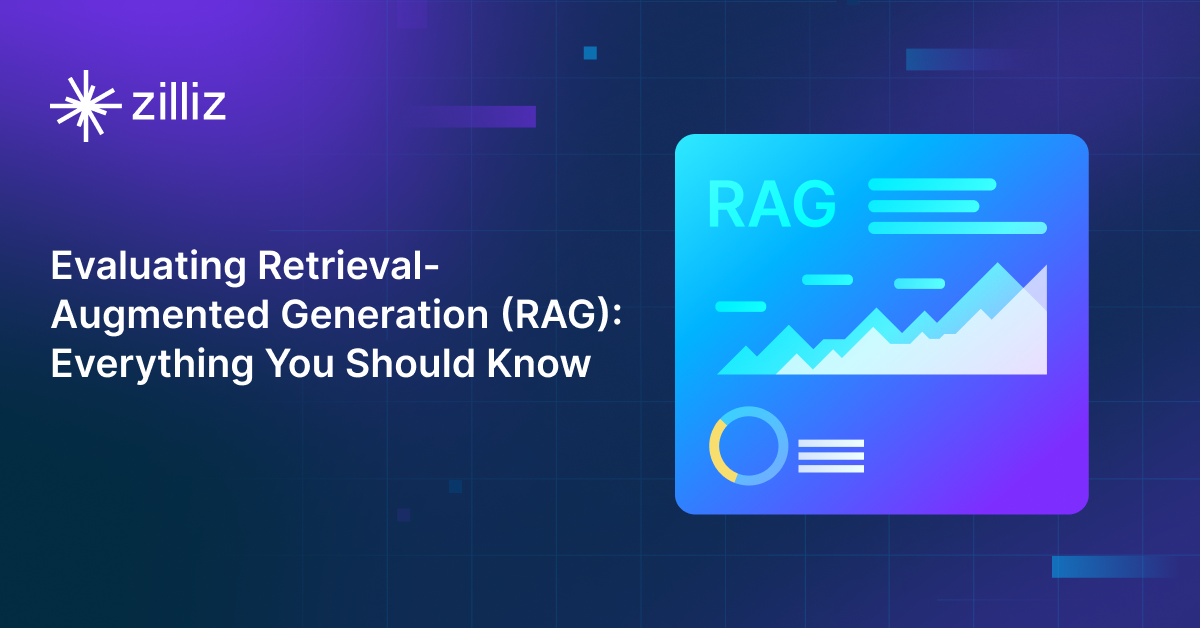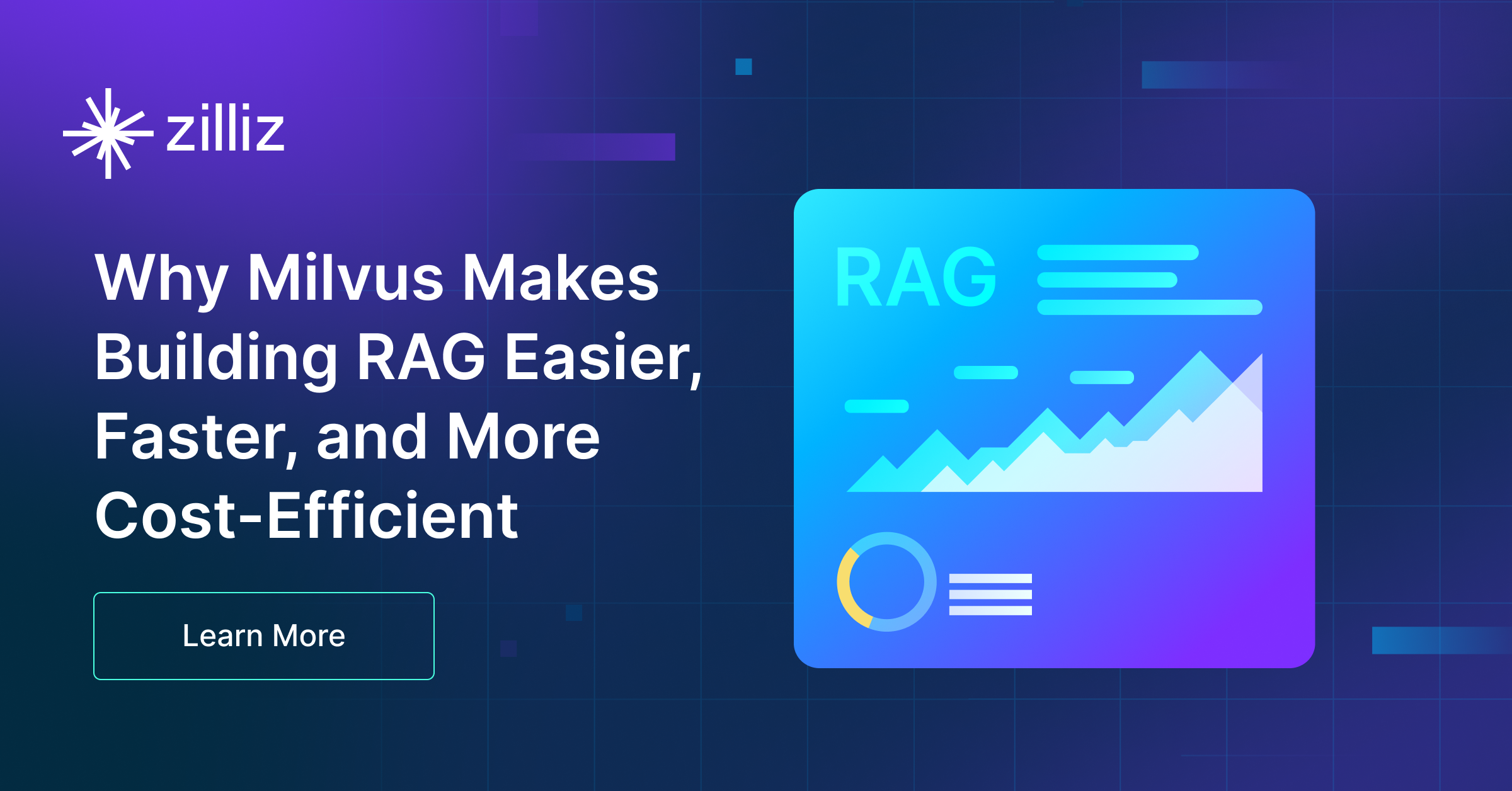Build RAG Chatbot with LangChain, LangChain vector store, Fireworks AI Llama 3.1 405B Instruct, and IBM granite-embedding-107m-multilingual
Introduction to RAG
Retrieval-Augmented Generation (RAG) is a game-changer for GenAI applications, especially in conversational AI. It combines the power of pre-trained large language models (LLMs) like OpenAI’s GPT with external knowledge sources stored in vector databases such as Milvus and Zilliz Cloud, allowing for more accurate, contextually relevant, and up-to-date response generation. A RAG pipeline usually consists of four basic components: a vector database, an embedding model, an LLM, and a framework.
Key Components We'll Use for This RAG Chatbot
This tutorial shows you how to build a simple RAG chatbot in Python using the following components:
- LangChain: An open-source framework that helps you orchestrate the interaction between LLMs, vector stores, embedding models, etc, making it easier to integrate a RAG pipeline.
- LangChain in-memory vector store: an in-memory, ephemeral vector store that stores embeddings in-memory and does an exact, linear search for the most similar embeddings. The default similarity metric is cosine similarity, but can be changed to any of the similarity metrics supported by ml-distance. It is intended for demos and does not yet support ids or deletion. (If you want a much more scalable solution for your apps or even enterprise projects, we recommend using Zilliz Cloud, which is a fully managed vector database service built on the open-source Milvusand offers a free tier supporting up to 1 million vectors.)
- Fireworks AI Llama 3.1 405B Instruct: This advanced model from Fireworks AI is designed for instruction-following tasks, featuring 405 billion parameters for enhanced comprehension and generation. It excels at providing detailed, context-aware responses and is ideal for customer support, educational applications, and any scenario requiring nuanced conversational abilities.
- IBM granite-embedding-107m-multilingual: This AI model specializes in generating multilingual embeddings, allowing for semantic understanding across various languages. With 107 million parameters, it excels in tasks such as cross-lingual retrieval, translation, and sentiment analysis, making it ideal for global applications that require nuanced understanding of diverse linguistic contexts.
By the end of this tutorial, you’ll have a functional chatbot capable of answering questions based on a custom knowledge base.
Note: Since we may use proprietary models in our tutorials, make sure you have the required API key beforehand.
Step 1: Install and Set Up LangChain
%pip install --quiet --upgrade langchain-text-splitters langchain-community langgraph
Step 2: Install and Set Up Fireworks AI Llama 3.1 405B Instruct
pip install -qU "langchain[fireworks]"
import getpass
import os
if not os.environ.get("FIREWORKS_API_KEY"):
os.environ["FIREWORKS_API_KEY"] = getpass.getpass("Enter API key for Fireworks AI: ")
from langchain.chat_models import init_chat_model
llm = init_chat_model("accounts/fireworks/models/llama-v3p1-405b-instruct", model_provider="fireworks")
Step 3: Install and Set Up IBM granite-embedding-107m-multilingual
pip install -qU langchain-ibm
import getpass
import os
if not os.environ.get("WATSONX_APIKEY"):
os.environ["WATSONX_APIKEY"] = getpass.getpass("Enter API key for IBM watsonx: ")
from langchain_ibm import WatsonxEmbeddings
embeddings = WatsonxEmbeddings(
model_id="ibm/granite-embedding-107m-multilingual",
url="https://us-south.ml.cloud.ibm.com",
project_id="<WATSONX PROJECT_ID>",
)
Step 4: Install and Set Up LangChain vector store
pip install -qU langchain-core
from langchain_core.vectorstores import InMemoryVectorStore
vector_store = InMemoryVectorStore(embeddings)
Step 5: Build a RAG Chatbot
Now that you’ve set up all components, let’s start to build a simple chatbot. We’ll use the Milvus introduction doc as a private knowledge base. You can replace it with your own dataset to customize your RAG chatbot.
import bs4
from langchain import hub
from langchain_community.document_loaders import WebBaseLoader
from langchain_core.documents import Document
from langchain_text_splitters import RecursiveCharacterTextSplitter
from langgraph.graph import START, StateGraph
from typing_extensions import List, TypedDict
# Load and chunk contents of the blog
loader = WebBaseLoader(
web_paths=("https://milvus.io/docs/overview.md",),
bs_kwargs=dict(
parse_only=bs4.SoupStrainer(
class_=("doc-style doc-post-content")
)
),
)
docs = loader.load()
text_splitter = RecursiveCharacterTextSplitter(chunk_size=1000, chunk_overlap=200)
all_splits = text_splitter.split_documents(docs)
# Index chunks
_ = vector_store.add_documents(documents=all_splits)
# Define prompt for question-answering
prompt = hub.pull("rlm/rag-prompt")
# Define state for application
class State(TypedDict):
question: str
context: List[Document]
answer: str
# Define application steps
def retrieve(state: State):
retrieved_docs = vector_store.similarity_search(state["question"])
return {"context": retrieved_docs}
def generate(state: State):
docs_content = "\n\n".join(doc.page_content for doc in state["context"])
messages = prompt.invoke({"question": state["question"], "context": docs_content})
response = llm.invoke(messages)
return {"answer": response.content}
# Compile application and test
graph_builder = StateGraph(State).add_sequence([retrieve, generate])
graph_builder.add_edge(START, "retrieve")
graph = graph_builder.compile()
Test the Chatbot
Yeah! You've built your own chatbot. Let's ask the chatbot a question.
response = graph.invoke({"question": "What data types does Milvus support?"})
print(response["answer"])
Example Output
Milvus supports various data types including sparse vectors, binary vectors, JSON, and arrays. Additionally, it handles common numerical and character types, making it versatile for different data modeling needs. This allows users to manage unstructured or multi-modal data efficiently.
Optimization Tips
As you build your RAG system, optimization is key to ensuring peak performance and efficiency. While setting up the components is an essential first step, fine-tuning each one will help you create a solution that works even better and scales seamlessly. In this section, we’ll share some practical tips for optimizing all these components, giving you the edge to build smarter, faster, and more responsive RAG applications.
LangChain optimization tips
To optimize LangChain, focus on minimizing redundant operations in your workflow by structuring your chains and agents efficiently. Use caching to avoid repeated computations, speeding up your system, and experiment with modular design to ensure that components like models or databases can be easily swapped out. This will provide both flexibility and efficiency, allowing you to quickly scale your system without unnecessary delays or complications.
LangChain in-memory vector store optimization tips
LangChain in-memory vector store is just an ephemeral vector store that stores embeddings in-memory and does an exact, linear search for the most similar embeddings. It has very limited features and is only intended for demos. If you plan to build a functional or even production-level solution, we recommend using Zilliz Cloud, which is a fully managed vector database service built on the open-source Milvus and offers a free tier supporting up to 1 million vectors.)
Fireworks AI Llama 3.1 405B Instruct optimization tips
Llama 3.1 405B Instruct is a high-capacity model suited for complex RAG applications requiring detailed reasoning. Optimize retrieval by pre-ranking documents with relevance scoring before passing them as input. Structure prompts efficiently by presenting the most critical information first, reducing unnecessary token consumption. Set temperature between 0.1 and 0.2 for factual tasks and adjust top-p to refine output quality. Use caching for repeated queries to reduce API load and improve response times. Fireworks AI’s GPU infrastructure allows for efficient batching—grouping multiple queries together improves overall throughput. Implement response streaming for real-time applications, reducing perceived latency. If using 405B alongside smaller models, assign it to handle high-complexity tasks while delegating simple queries to lightweight alternatives.
IBM granite-embedding-107m-multilingual optimization tips
To optimize the IBM granite-embedding-107m-multilingual model in a Retrieval-Augmented Generation (RAG) setup, start by fine-tuning the model on domain-specific data to improve its relevance and contextual understanding. Use batch processing for embedding generation to enhance throughput, and implement caching mechanisms for frequently queried embeddings to reduce latency. Regularly evaluate and update your retrieval strategies using various metrics, such as precision and recall, to ensure you're consistently retrieving the most pertinent data. Additionally, consider augmenting your dataset with diverse multilingual inputs to develop a more robust understanding of different languages, and experiment with different hyperparameter settings, such as learning rates and embedding dimensions, to find the optimal configuration for your specific use case.
By implementing these tips across your components, you'll be able to enhance the performance and functionality of your RAG system, ensuring it’s optimized for both speed and accuracy. Keep testing, iterating, and refining your setup to stay ahead in the ever-evolving world of AI development.
RAG Cost Calculator: A Free Tool to Calculate Your Cost in Seconds
Estimating the cost of a Retrieval-Augmented Generation (RAG) pipeline involves analyzing expenses across vector storage, compute resources, and API usage. Key cost drivers include vector database queries, embedding generation, and LLM inference.
RAG Cost Calculator is a free tool that quickly estimates the cost of building a RAG pipeline, including chunking, embedding, vector storage/search, and LLM generation. It also helps you identify cost-saving opportunities and achieve up to 10x cost reduction on vector databases with the serverless option.
 Calculate your RAG cost
Calculate your RAG cost
What Have You Learned?
By diving into this tutorial, you’ve unlocked the power of combining cutting-edge tools to build a RAG system from the ground up! You learned how LangChain acts as the glue, orchestrating the flow between components with its flexible framework. The LangChain Vector Store stepped in as your retrieval powerhouse, efficiently storing and querying document embeddings generated by IBM’s granite-embedding-107m-multilingual model, which shines at capturing semantic meaning across multiple languages. Then came the magic of Fireworks AI’s Llama 3.1 405B Instruct, a colossal language model that transformed retrieved context into coherent, human-like responses. Together, these pieces form a seamless pipeline: documents are embedded, stored for lightning-fast retrieval, and fed into the LLM to generate answers that feel both informed and natural. Along the way, you discovered practical optimizations—like tweaking chunk sizes for better relevance or balancing cost and performance—and even got hands-on with a free RAG cost calculator to estimate expenses before scaling up.
But wait—there’s more! This tutorial wasn’t just about assembling parts; it was about empowering you to innovate. You’ve seen how to fine-tune retrieval strategies, leverage multilingual capabilities for global applications, and experiment with hybrid approaches that blend RAG with other AI techniques. Now, with this toolkit, you’re ready to tackle real-world challenges, whether you’re building chatbots, enhancing search engines, or crafting personalized content. So go ahead—experiment fearlessly, optimize creatively, and push the boundaries of what’s possible. The future of intelligent applications is yours to shape, and you’ve already got the skills to start building it. Let’s get coding! 🚀
Further Resources
🌟 In addition to this RAG tutorial, unleash your full potential with these incredible resources to level up your RAG skills.
- How to Build a Multimodal RAG | Documentation
- How to Enhance the Performance of Your RAG Pipeline
- Graph RAG with Milvus | Documentation
- How to Evaluate RAG Applications - Zilliz Learn
- Generative AI Resource Hub | Zilliz
We'd Love to Hear What You Think!
We’d love to hear your thoughts! 🌟 Leave your questions or comments below or join our vibrant Milvus Discord community to share your experiences, ask questions, or connect with thousands of AI enthusiasts. Your journey matters to us!
If you like this tutorial, show your support by giving our Milvus GitHub repo a star ⭐—it means the world to us and inspires us to keep creating! 💖
- Introduction to RAG
- Key Components We'll Use for This RAG Chatbot
- Step 1: Install and Set Up LangChain
- Step 2: Install and Set Up Fireworks AI Llama 3.1 405B Instruct
- Step 3: Install and Set Up IBM granite-embedding-107m-multilingual
- Step 4: Install and Set Up LangChain vector store
- Step 5: Build a RAG Chatbot
- Optimization Tips
- RAG Cost Calculator: A Free Tool to Calculate Your Cost in Seconds
- What Have You Learned?
- Further Resources
- We'd Love to Hear What You Think!
Content
Vector Database at Scale
Zilliz Cloud is a fully-managed vector database built for scale, perfect for your RAG apps.
Try Zilliz Cloud for Free


